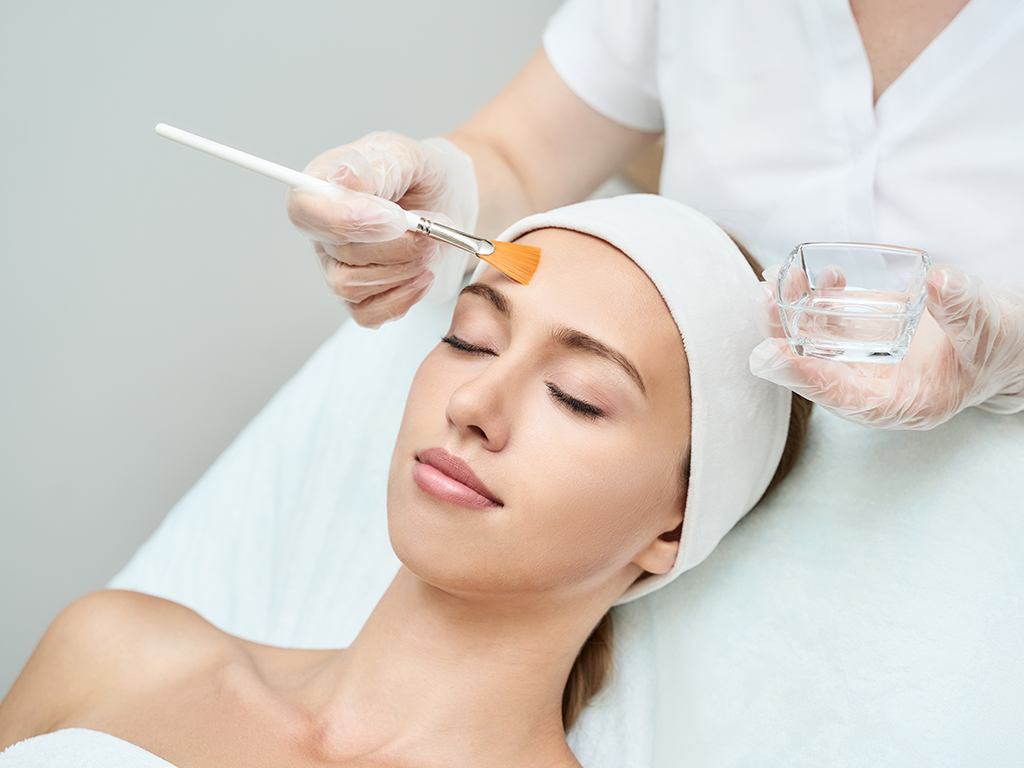
What is a chemical peel & do you need one?
Chemical peels are a popular skin peeling treatment used to improve the texture and appearance of the skin. This chemical face peel involves applying a solution to the skin that causes it to exfoliate and eventually peel off, revealing fresher, smoother skin underneath.
Whether you’re dealing with acne scars, pigmentation issues, or simply want a refreshed complexion, chemical peel treatments could be the answer.
In this blog, we’ll delve into what a chemical peel is, how it works, and whether you might benefit from one.
What is a chemical peel?
A chemical peel is a dermatological procedure that uses a chemical solution to remove the top layers of the skin. This process promotes the regeneration of new, healthier skin. Chemical peels can address various skin concerns, including acne scars, hyperpigmentation, fine lines, and uneven skin texture. The treatment can be performed on the face, neck, and hands.
How do chemical peels work?
Chemical peels work by applying a solution that causes controlled damage to the skin’s surface layers. This triggers the skin’s natural healing process, resulting in the shedding of old skin cells and the growth of new, rejuvenated skin. The depth of the peel can vary, from superficial peels that target the outermost layer to deep peels that reach deeper into the skin.
Why are chemical peels better than scrubs?
Chemical peels offer several advantages over traditional scrubs:
- Effective Exfoliation: Unlike scrubs that rely on physical abrasives, chemical peels dissolve the bonds between dead skin cells, leading to a more uniform exfoliation.
- Deeper Penetration: Chemical peels can penetrate deeper into the skin, addressing issues that scrubs cannot.
- Targeted Treatment: Peels can be tailored to specific skin concerns, such as acne scars, pigmentation, or fine lines.
- Long-lasting Results: The effects of chemical peels can last longer than those of scrubs, making them a more effective option for significant skin improvements.
What are the different types of chemical peels?
Chemical peels come in various types, each designed to address different skin concerns and depths.
Superficial Peel
A superficial peel, also known as a light peel, targets the outermost layer of the skin. This type of peel is ideal for addressing mild skin imperfections, such as fine lines, minor pigmentation issues, and rough texture. Our superficial peels usually have mild acids like alpha-hydroxy acids (AHAs) or beta-hydroxy acids (BHAs) and active ingredients like lactic acid, glycolic acid, kojic acid, mandelic acid, citric acid, salicylic acid and more.
The procedure time for superficial peels is just 30 minutes, with zero recovery time required.
Deep Peel
A deep peel penetrates several layers of the skin and is used for more severe skin concerns, such as deep wrinkles, significant pigmentation issues, and scars. This type of peel uses stronger acids like phenol or trichloroacetic acid (TCA) and has active ingredients like vitamin A, retinol & acetic acid.
The procedure time for deep peels is 30 minutes, with a recovery time of 7-10 days.
Which peel is correct for you?
Choosing the right chemical peel depends on your skin type, concerns, and desired outcomes. A superficial peel might be suitable if you’re looking for a gentle refresh. If you’re dealing with deeper wrinkles or significant scars, a deep peel might be more appropriate. Book an appointment with our aesthetic dermatologist to find the best chemical peel treatment for your needs.
How to take care of my skin after getting a chemical peel?
Post-care after a chemical peel is crucial to ensure optimal results and avoid complications. Here are some essential tips:
- Moisturise Regularly: Keep your skin hydrated with a gentle, non-comedogenic moisturiser.
- Avoid Sun Exposure: Your skin will be more sensitive after a peel, so it’s important to avoid direct sun exposure and use a high-SPF sunscreen.
- Follow Your Dermatologist’s Instructions: Adhere to any specific aftercare instructions provided by your dermatologist, including the use of prescribed ointments or creams.
- Avoid Harsh Products: Steer clear of products containing retinoids, alpha-hydroxy acids, or other strong ingredients until your skin has fully healed.
- Do Not Pick at Your Skin: Allow the peeling process to occur naturally to avoid scarring or infection.
Am I a good candidate for peels?
Chemical peels can benefit a wide range of people, but certain factors can influence your suitability for the treatment:
- Skin Type: Those with fair skin and light hair are typically better candidates for deeper peels, while superficial peels are generally safe for all skin types.
- Skin Concerns: Chemical peels are effective for treating issues like acne scars, hyperpigmentation, fine lines, and uneven texture.
- Health Conditions: Individuals with certain skin conditions, such as active infections or a history of keloids, may not be suitable candidates.
- Lifestyle: Commitment to post-peel care is essential, so ensure you can follow the necessary aftercare steps.
Takeaway
Chemical peels are a powerful skin treatment that can address various skin concerns, from acne scars and pigmentation to fine lines and texture issues. Understanding the different types of chemical peels and their benefits can help you make an informed decision about whether this treatment is right for you.
Book an appointment with our aesthetic dermatologist to find the best peel for your skin type and concerns, and follow proper aftercare to ensure the best results. With the right approach, chemical peels can significantly improve the appearance and health of your skin, leaving you with a smoother, more radiant complexion.
Frequently Asked Questions
Yes, chemical peels are generally safe when performed by a qualified dermatologist. However, it's essential to follow pre and post-treatment care instructions to minimise the risk of complications and achieve the best results.
Chemical peels and microdermabrasion are both effective exfoliation treatments, but chemical peels can penetrate deeper into the skin, offering more significant results for issues like pigmentation, acne scars, and fine lines. Microdermabrasion is less intense and may be better for those seeking a gentler, surface-level exfoliation.